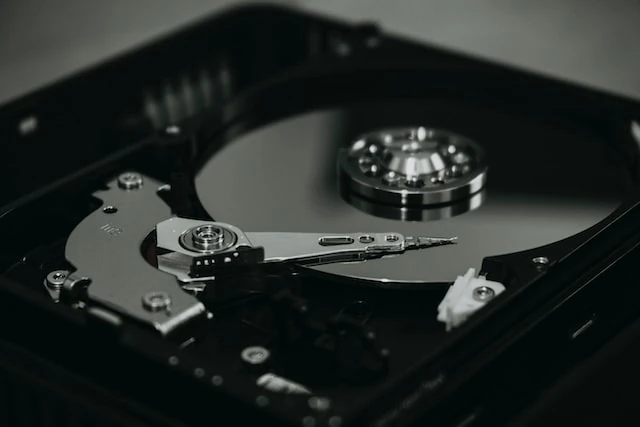
On my desktop PC, I had a dual-boot setup with Fedora Linux and Windows 10, where both systems were placed on separate SSDs. In addition, there was a HDD just for data storage, that could be mounted from both OS’. I wanted to replace those three disk with a single, big SSD, while, preferably, not having to re-install anything. Here are some rough instructions based on what I did to accomplish this.
Please apologize for this being super informal and messy. This is just a rough sketch of my thoughts, but maybe someone with a similar problem will still benefit from it.
Starting situation
- Linux SSD at
/dev/sda(250 GB, MBR layout)- EFI partition at
/dev/sda1(mounted to/boot/efi) - Boot loader partition at
/dev/sda2(mounted to/boot) - OS partition (with subvolumes for root and home) (mounted to
/and/home)
- EFI partition at
- Windows SSD at
/dev/sdb(250 GB, GPT layout)- Recovery partition at
/dev/sdb1 - EFI partition at
/dev/sdb2 - ? partition at
/dev/sdb3 - OS partition at
/dev/sdb4
- Recovery partition at
- Data HDD at
/dev/sdc(500 GB)- Data partition (NFTS) at
/dev/sdc1
- Data partition (NFTS) at
Goal
Move all of the above to a new 2 TB SSD at /dev/sdd.
Prerequisites
- 1 USB stick containing a bootable Linux live system (I used Kali, you can use Debian or whatever you prefer)
- 1 USB stick containing a bootable Windows (Win 10, in my case)
Steps
Check for file system errors (optional)
This step will probably not be needed for you, but I’m still going to mention it. I’m using Fedora 37, which, by default, uses btrfs as a file system. While btrfs has a few advantages over ext4 (built-on compression, deduplication, snapshotting, …), it is sometimes a bit more bitchy. So before doing any modifications to the file system partition, check for errors (this has caused me quite a bit of trouble later on, so better do it right in the beginning).
1 | sudo btrfs check /dev/sda3 |
In fact, the commands reported a couple of broken inode errors. Apparently, the easiest way to deal with this is to locate the corresponding files, hope they’re not important and simply delete them.
1 | # find file by inode, then delete it using 'rm' |
Running the check again didn’t yield any more errors, so all good.
If you’re on a ext4 file system, it probably wouldn’t hurt to run fsck instead, before moving on.
Copy first OS (Linux)
- Boot into the Kali (or whichever) live system
- Open GParted
- Copy and paste (Ctrl+C, Ctrl+V) (it’s actually as easy as that) every single partition of
/dev/sdato the target SSD (/dev/sdd)- You could also use
ddto block-wise copy the whole disk all at once, but I liked this method better
- You could also use
- Optionally resize the OS partition to your preferred size
- Try to reboot from new disk (in your BIOS’ boot menu, choose the new disk and hope GRUB and afterwards your Linux pops up)
Convert MBR to GPT (optional)
You might not need this step either. Only run this (⚠️), if one of your disks still uses the old MBR partition table format (like in my case). With MBR, there can only be 4 partitions at max (I believe…), so I first had to convert to GPT, like this:
1 | gdisk /dev/sda |
Copy second OS (Windows)
- Boot into the live system again
- Open GParted
- Do the same copy- & pasting for all Windows-related partitions
- Unplug both of the old SSDs
- Try to reboot, choose to boot Windows
- Hope a Windows-branded error screen pops up
At this point, everything went well. You’ll only have to fix the Windows boot loader again, because Windows is now located at a different place on the disk than before.
Fix Windows boot loader
- Boot into the Windows installation medium
- Choose “Repair computer” -> “Troubleshoot” -> “Advanced Options” -> “Command Prompt”
- Run
diskpart(opens an interactive Shell) - Run
list diskto get the ID (index) of the new SSD (e.g. 0) - Run
sel disk 0to select it - Run
list volto get the ID (index) of your Windows’ EFI partition (the one in FAT32 format) (e.g. 5) - Run
sel vol 5 - Assign the volume some drive letter by running
assign letter=V: - Exit the shell (
exit) - Open boot loader directory (
cd /d V:\EFI\Microsoft\Boot\) - Run
bootrec /FixBoot(might fail, but that’s fine) - Backup your old boot loader config file (BCD) with
ren BCD BCD.old - Repair the BCD with
bcdboot c:\Windows /l en-us /s V: /f ALL
(Source)
Reboot. Everything should be working fine now (…).
Copy data
If you have another disk just for data storage, that you want to move, preferably just perform a file-level copy (using rsync) to the newly created, empty partition from above.
Good luck!